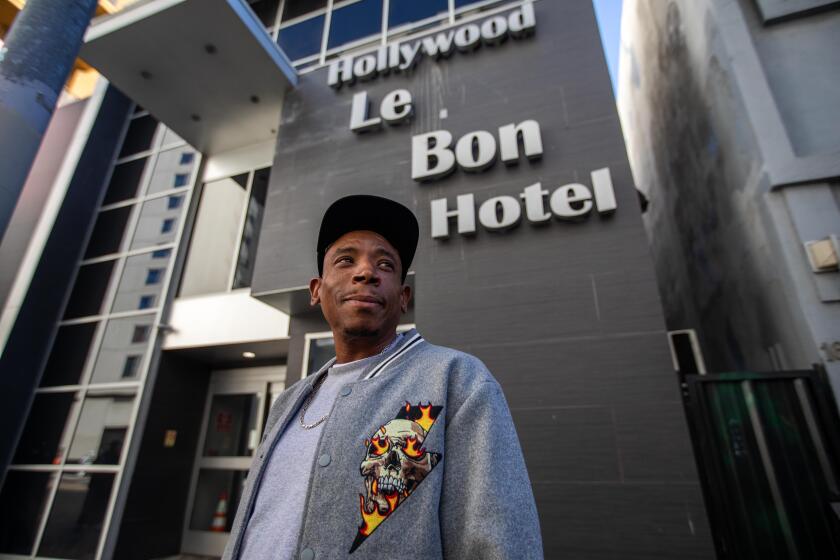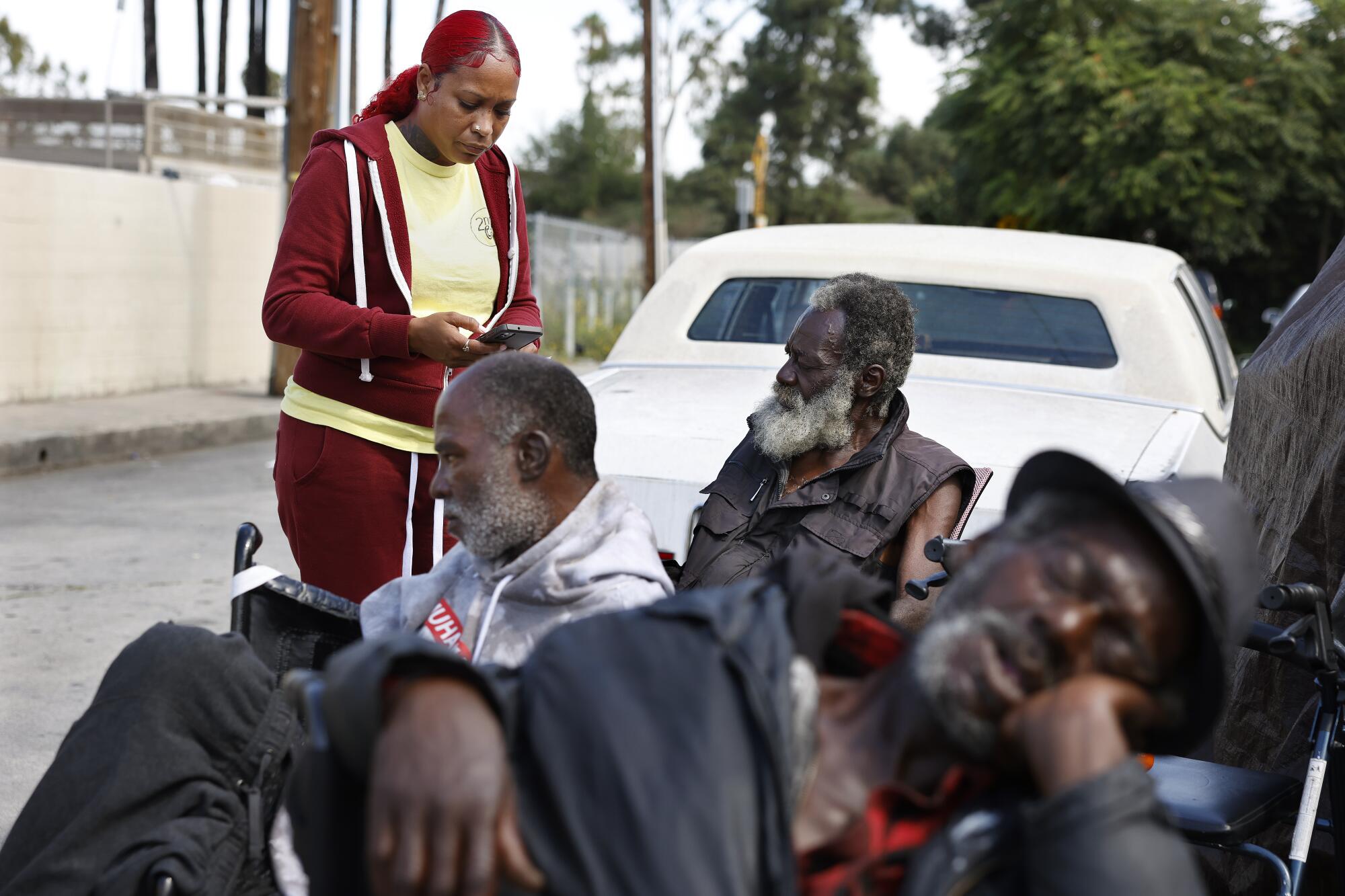
A string of tents and makeshift shelters sat for years west of the 110 Freeway, across the street from an elementary school in the Vermont Vista neighborhood.
Then, one day in February, workers cleared the encampment, which stretched about four blocks from Colden Avenue to Century Boulevard, moving dozens of people indoors.
Today, a single tent remains, along with about five people living in a pedestrian tunnel under the freeway.
Longtime residents said the neighborhood is quiet again, and the sidewalks are clean.
“It was an ugly sight, but now things are better,” said Andrea Ceron, 59. “We still deal with other problems, like police chases and prostitution.”
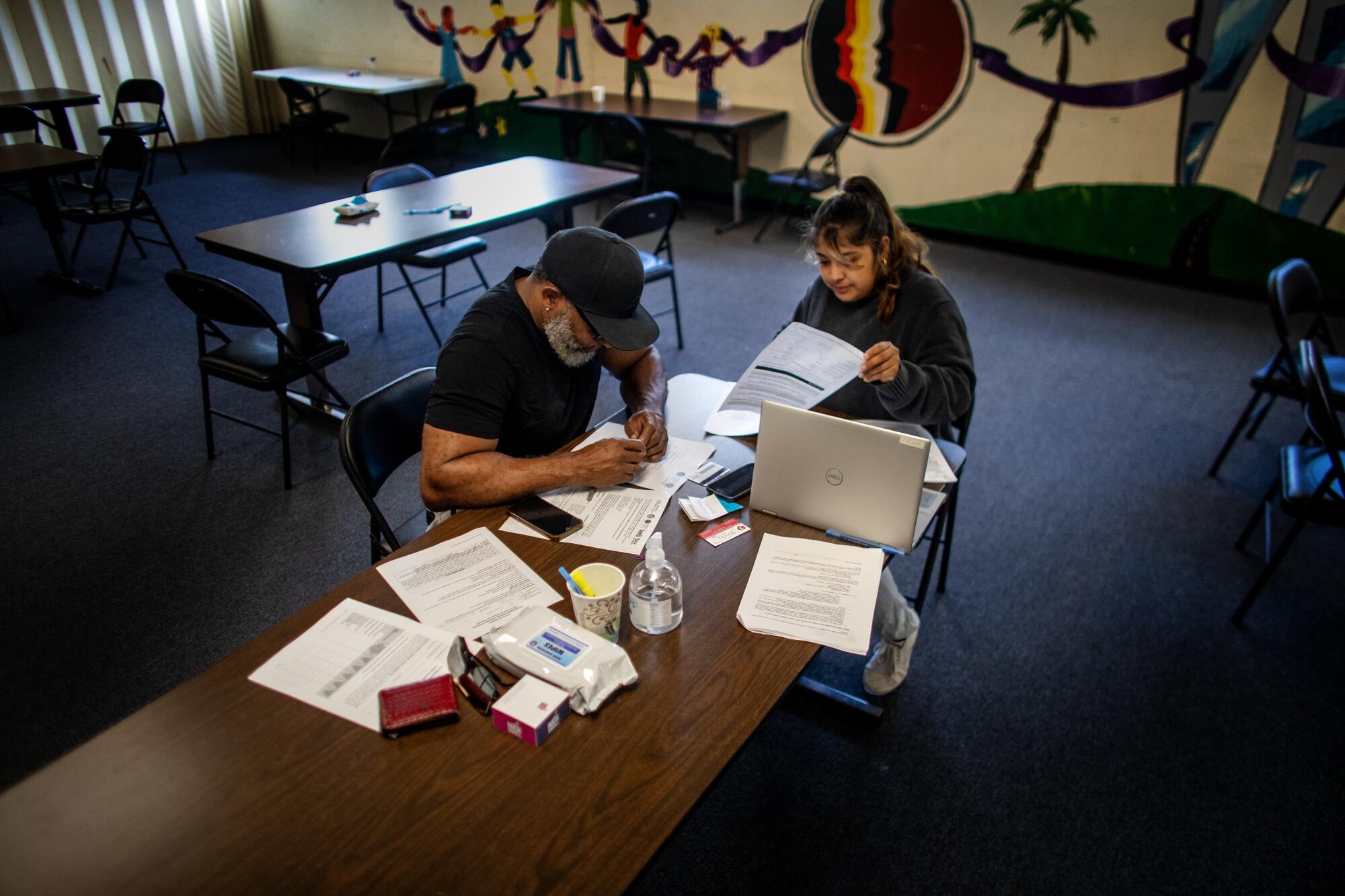
South L.A. has been a rare bright spot amid the city’s homelessness crisis.
While homelessness increased in other parts of the city, South L.A. had 10% fewer unhoused people than the previous year, according to the annual point-in-time count conducted last January.
Officials and service providers attributed the drop to the hard work they have put in for years coming to fruition, with the help of funding infusions, in an area where most residents are Latino or Black and many live below the poverty line.
Mayor Karen Bass’ signature homelessness initiative, Inside Safe, has also made a dent, with more encampment cleanups in South L.A. — including the one in Vermont Vista — than in any other part of the city.
While Inside Safe has cleared long-standing encampments, most who lived in them are still in temporary housing or are back on the street. The problem remains vast, with nearly 13,000 unhoused people in South L.A., according to the point-in-time count.
Bass took office in December 2022, so the progress made by Inside Safe isn’t reflected in the 10% drop from the point-in-time count. But her supporters say the program, as well as her sense of urgency on homelessness, is setting up South L.A. for more success.

City Councilmember Curren Price, who represents large parts of South L.A., credited the drop in homelessness to increased collaboration among elected officials and a willingness to try different strategies. Bass, he said, has “set a very positive and inclusive tone” and worked well with county supervisors.
But backsliding is all too easy, he warned.
“That 10% is a nice number to throw around, but we know it could go back up easily, and so we can’t get complacent,” he said. “We know we have to keep identifying the financial resources, because these properties need to be built and services need to be provided, and if that stops, then all of our efforts are going to be for nothing.”
Nearly 70% of South L.A. residents are renters, and the median household income is $47,692, compared with more than $76,000 citywide.
Amid rising rents, inflation and the end of pandemic renter protections, more people are at risk of becoming homeless as eviction cases work their way through the courts.
“A lot of folks are one check away from being in real trouble,” Price said. “They can’t make the car payment, they can’t pay their rent or house payment, kids need clothes, food, medicine, etc. So it’s a very delicate situation that we’re in.”

Karen McGee, a homelessness outreach worker with the South L.A. nonprofit 2nd Call, said many of the people she helps are families or senior citizens who couldn’t keep up with rising rents. Most are desperate to get off the streets.
“They want any help they can get,” she said.
In February, in addition to Vermont Vista, Inside Safe cleared a large encampment at 88th Street and Western Avenue, where people lived near a vacant lot surrounded by a chain-link fence. Since then, no tents have reappeared at the site.
Many of the large encampments in South L.A. targeted by Inside Safe were along the 110 Freeway’s underpasses and overpasses. A few tents have returned, but as of December, most areas remained clear.
“We had to rely on the police,” said Mary Action, 86, who lives near the former Vermont Vista encampment. “It was a real mess. There was drug use, fighting and a shooting.”
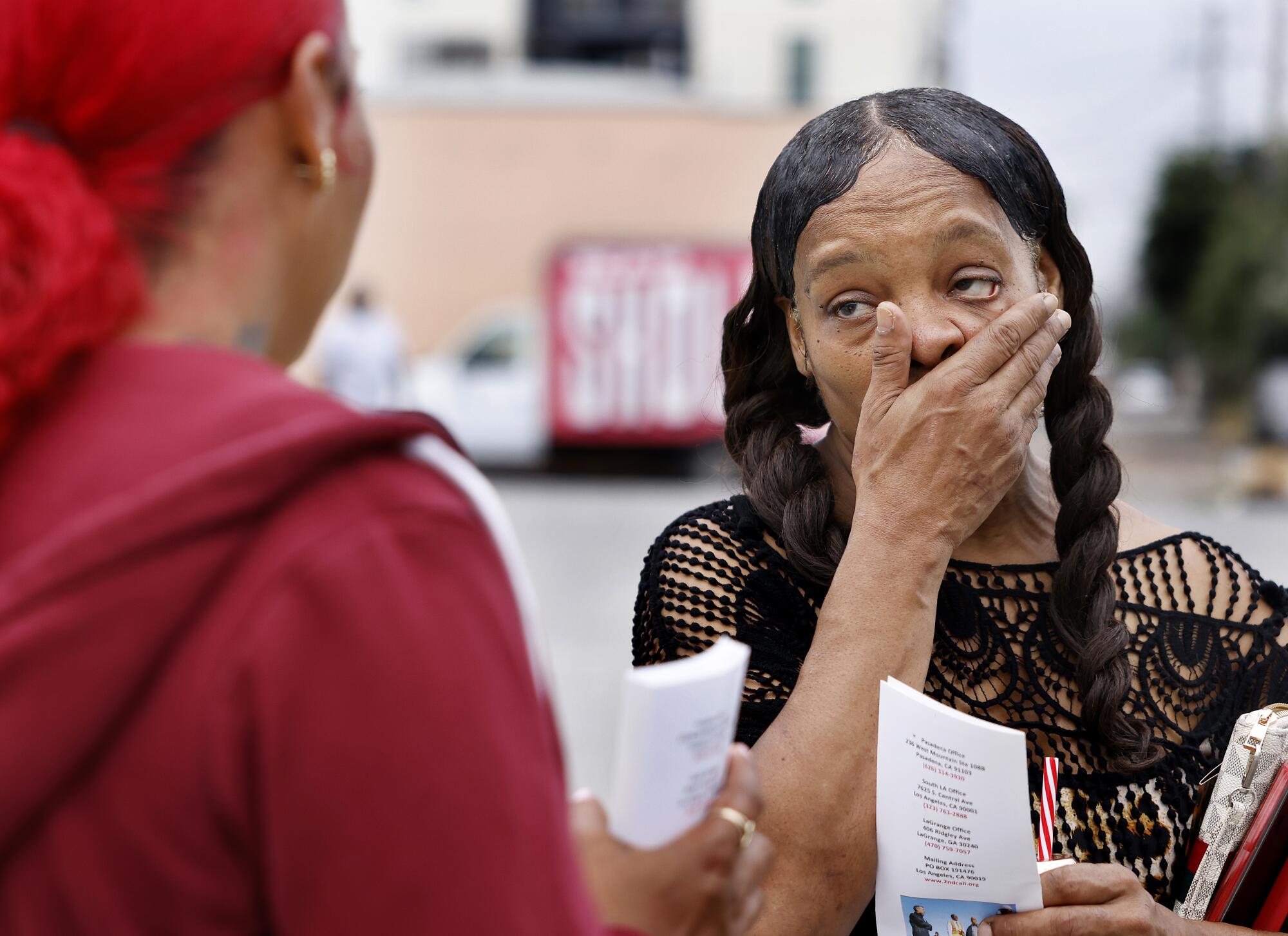
Valentin Gonzalez, another Vermont Vista resident, said that for two weeks, a homeless man lived up in a tree outside his home.
“I ended up cutting the branches off to get him to leave,” said Gonzalez, 61. “It was really bad here.”
Getting people off the streets is an arduous and time-consuming process. Sometimes, outreach workers speak with unhoused people frequently to earn their trust so they will accept help.
“We go to the same areas, whether the encampments are there or not,” McGee said. “Sometimes we show up, and people have either moved or got the help they needed.”
As her Inside Safe program enters its second year, Bass said she is determined to clear the bottleneck keeping homeless residents from getting into permanent homes.
The South L.A. planning area, as defined by the point-in-time count and other homelessness measures, includes not only neighborhoods like Crenshaw and Watts but cities such as Compton, Lynwood and Paramount.
The area is riddled with social problems that include overcrowded housing, gang violence, drug use and inadequate access to healthcare, some of it with roots in discriminatory practices such as redlining. Service providers have historically had a hard time getting funding.
“You have organizations in the Westside and Hollywood that have been around for decades and have strong boards and these private funding networks that support them as well,” said Katie Hill, deputy director of HOPICS, the lead homeless services agency in the area. “We hardly have any private fundraising at all to help us with this issue, because the community doesn’t have money.”
But the $1.2-billion city bond measure Proposition HHH and the quarter-percent county sales tax Measure H have brought an infusion of cash.
The additional funding helped boost HOPICS’ annual budget to $105 million. About 15% of the money goes to subcontractors who provide homeless services, and at least 30% goes to financial assistance for low-income families.
HOPICS has expanded its payroll to more than 430 employees and increased its outreach teams, which provide services that include housing and street medicine, from four members to 22.
Juana Romero, who works on a HOPICS outreach team, attributes the decrease in homelessness to this street-level expansion, as well as to programs like Inside Safe.
“It’s all very helpful,” she said. “The resources are there to pull people off the streets and bring them inside.”
Hundreds of new public housing units have been built, or are in the process of being built, in South L.A. And residents are being prioritized for permanent housing over people from outside the area, said Veronica Lewis, director of HOPICS.
Since 2015, the number of emergency shelters in the South L.A. area has increased from 60 to 205, and permanent supportive housing projects went from 20 to 71, according to city records.
City Councilmember Marqueece Harris-Dawson, whose district includes portions of South L.A., said that when the Measure H money arrived, nonprofits that had been working on homelessness in the area were ready to step up.
“When there’s availability of resources, you have people who know what to do with those resources and are prepared to carry it out,” he said.
Harris-Dawson added that residents of South L.A. are more supportive of housing developments than those from other parts of L.A. County.
“And then I think our social service agencies are pretty strong and are doing a really good job of keeping track of folks that are on the street, so that when units do become available, they can find them and get them in,” he said.
Programs that prevent people from falling into homelessness have also been vital in South L.A.
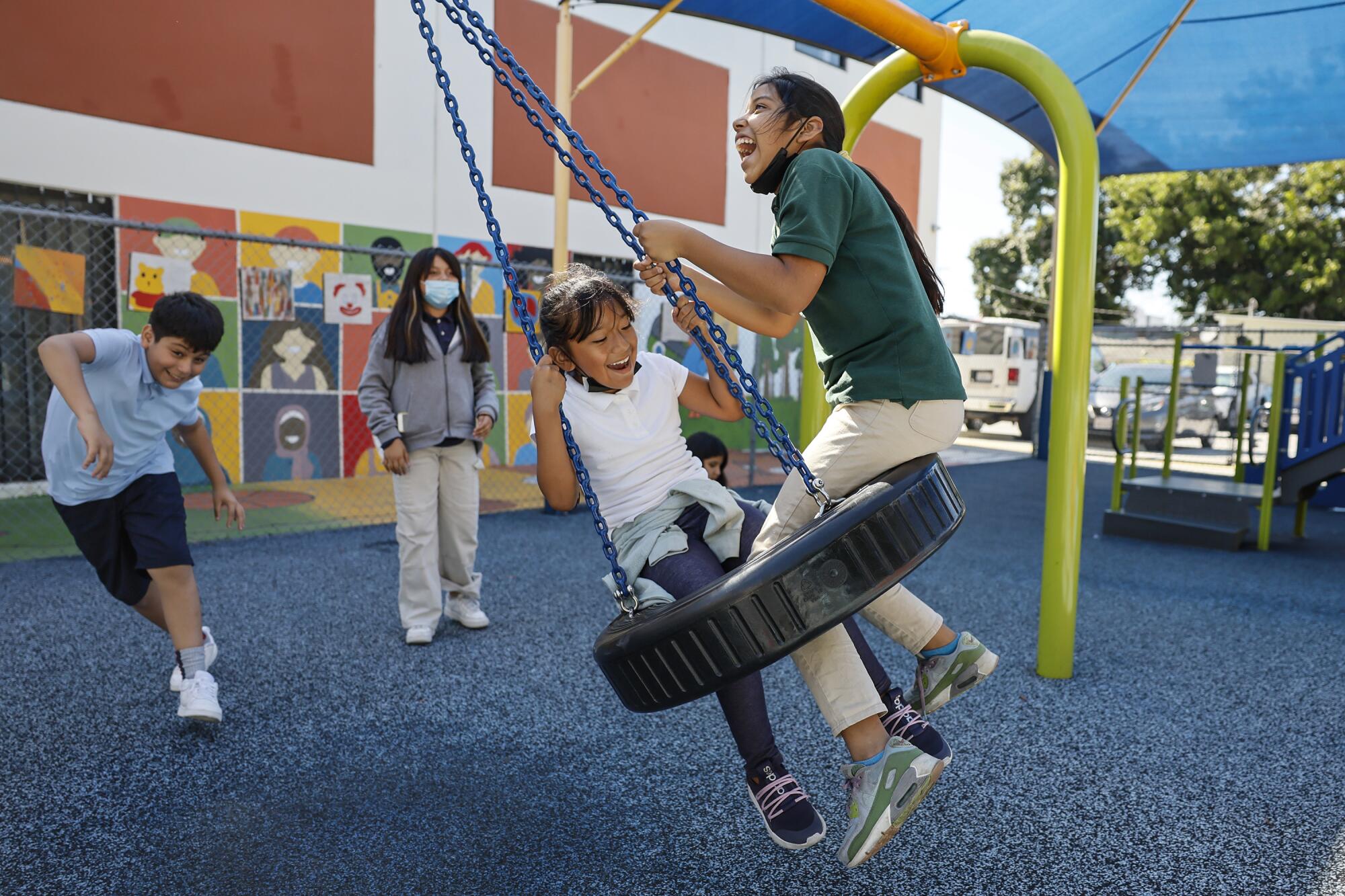
At All Peoples Community Center in Historic South-Central, about 90% of clients are in need of emergency rental assistance, said Julio Ramos, director of the Family Resource Center, one of 16 centers that help low-income families, many of whom are on the verge of homelessness. The centers, which are run by nonprofits and receive city funding, also provide financial education and other services.
“We’re getting clients that are 25 months behind on rent,” Ramos said. “Utilities as well, especially when they’re included with the rent.”
Last year, the City Council approved funding for four additional centers.
Neery Montes, 40, who has two sons, was in a panic when she arrived at the All Peoples center last winter. She had lost her job at a bakery and was seven months behind on rent and utilities, owing about $9,600 for a small one-bedroom in South Los Angeles.
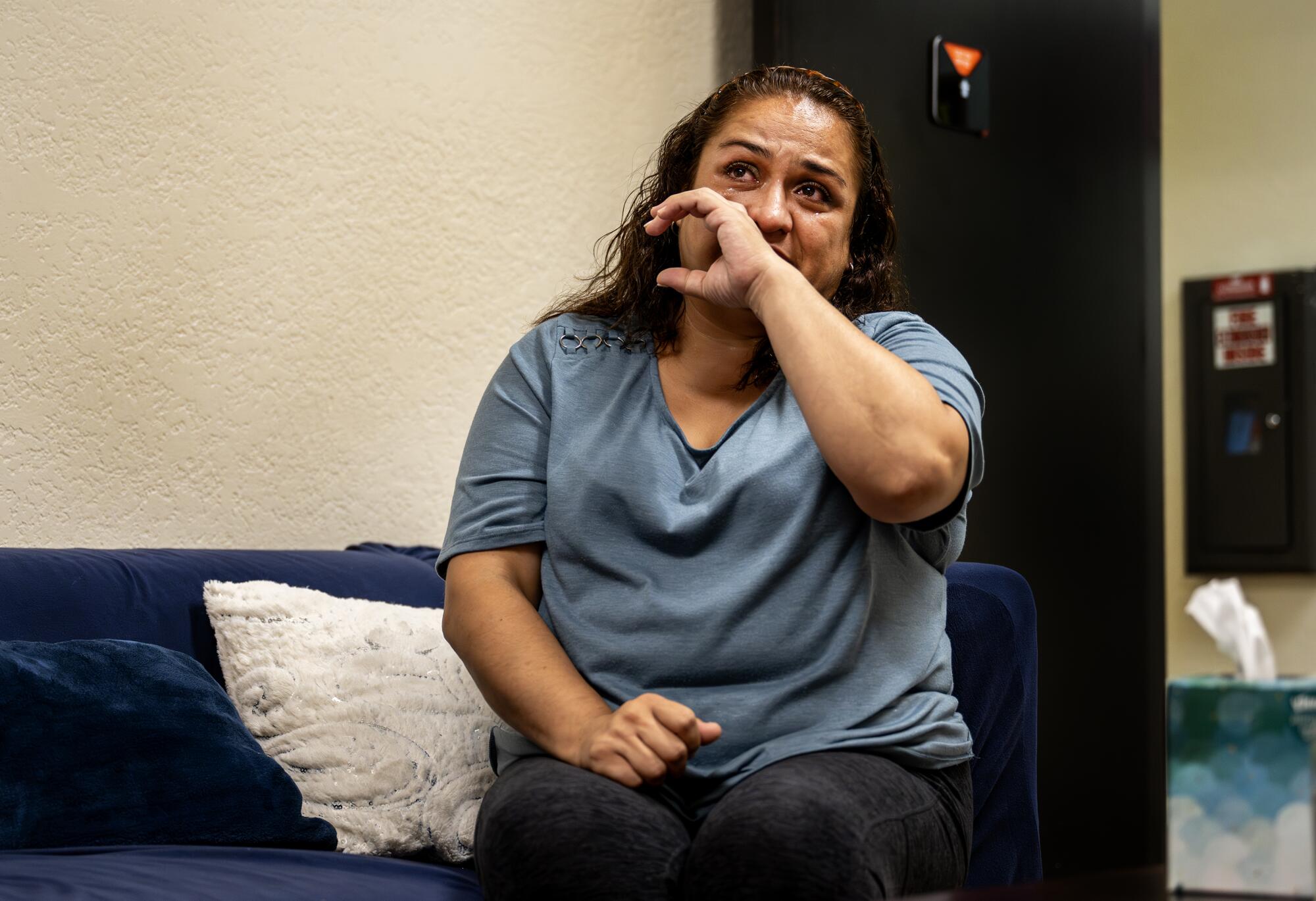
Her new landlord was threatening to evict her and had raised her rent, despite the pandemic-related rental freeze and eviction moratoriums.
“It was a very difficult time for me,” she said. “I was dealing with anxiety and depression.”
Montes said she worried about ending up homeless, as she had been before, when she fled from her husband.
Case manager Jessica Sanabria-Rosales signed up Montes for several food programs as well as emergency rental assistance. Montes was able to stay in her apartment and pay off 83% of the past rent. The center created a payment plan for the balance.
With more outreach workers on the streets, the labor-intensive work of earning a homeless person’s trust continues.
As a HOPICS team stopped at the site of the former encampment in Vermont Vista, LeAndre Hewitt rode up on his bicycle.
Outreach Services coordinator Mychal Johnson had placed Hewitt, 34, in shelters several times. Each time, Hewitt, who has struggled with drug and mental health issues, was kicked out, Johnson said.
This time, in a first, Hewitt was initiating the conversation and requesting shelter.
The HOPICS workers found a spot for Hewitt at Safe Landing, an interim housing facility with beds and 24/7 clinical care that opened about a year ago.
The group discussed what to do with Hewitt’s bicycle, which didn’t fit in the van.
Finally, Hewitt threw his bike on the curb and hopped in the van.
More to Read
Sign up for Essential California
The most important California stories and recommendations in your inbox every morning.
You may occasionally receive promotional content from the Los Angeles Times.
